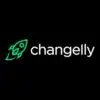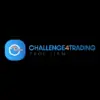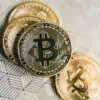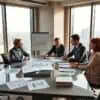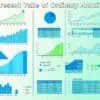NFTs are special digital assets. They are built using blockchain technology. This means that they are unique and can’t be copied. NFTs can represent different things like digital art, music, videos, collectibles, virtual real estate, gaming items and more.
They allow creators to make money from their digital content and buyers to own a unique digital piece. NFT prices go up and down a lot because the market is very young.
NTFs Explained
NTFs are based on blockchain technology. NFTs are digital tokens that represent ownership of an item, such as a collectible card, artwork, or even a piece of real estate.
Unlike traditional cryptocurrencies like Bitcoin and Ethereum which are fungible (interchangeable) and divisible into smaller units, each NFT is one-of-a-kind and cannot be divided into smaller units.
The most notable application of NFTs so far has been in the gaming industry where they can be used to represent ownership of virtual items and game levels.

For example, the popular game CryptoKitties uses NFTs to represent rare digital cats that players can buy and trade with each other.
Other popular games like Decentraland use NFTs for in-game avatars, land plots, and other virtual goods. Outside of gaming, NFTs have also been used to tokenize artwork and other physical assets such as real estate.
Understanding how NFTs work is essential if you want to trade with them successfully and profitably. In addition to reading up on general information about NFTs online, attending events focused on this new technology can be incredibly helpful in learning more about it.
With careful research, trading NFTs can become an interesting way to diversify your investment portfolio or take advantage of emerging trends in crypto markets.
What are NFTs and how do they differ from cryptocurrency?
NFTs are built on blockchain technology that represent unique digital items such as art, collectibles, games, and virtual real estate. They differ from cryptocurrency in a few ways:
Every single NFT is unique and can be distinguished from others based on its characteristics. This makes them more suitable for applications that involve authentication or ownership of physical or digital items like artworks and collectibles.
Bitcoin and other cryptocurrencies are fungible, meaning that any unit of a given cryptocurrency has the same value as any other unit of the same currency.
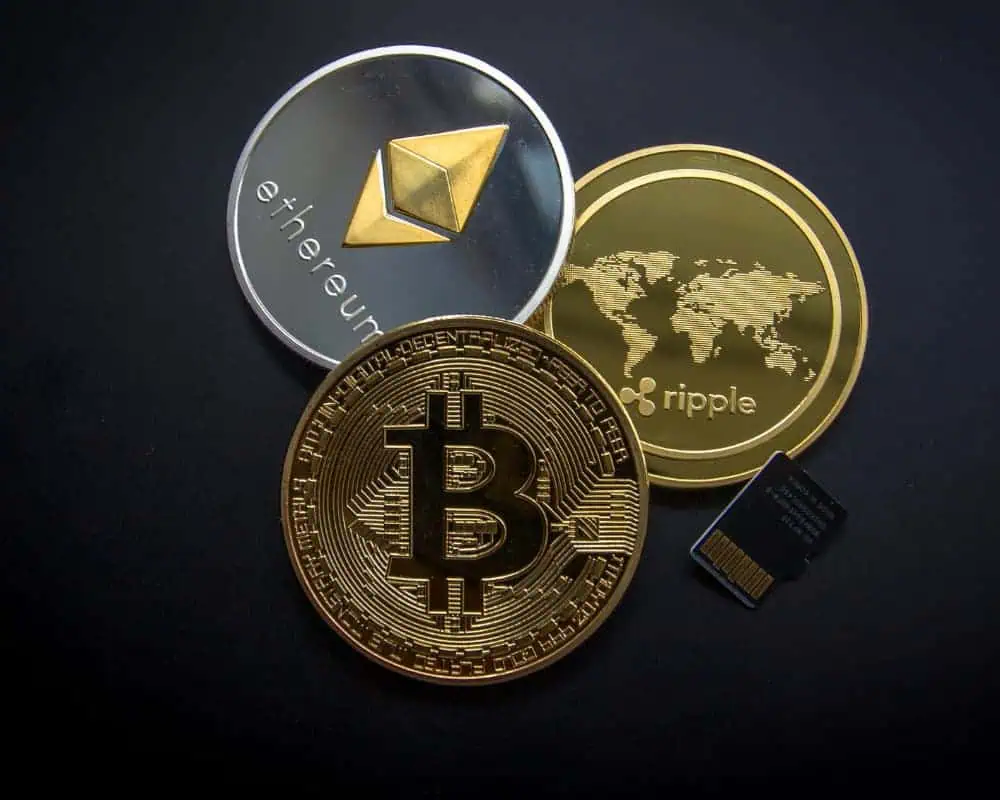
Another important difference is that while cryptocurrency transactions are generally limited to sending and receiving money between two stakeholders, NFTs encompass a range of uses beyond simple monetary transactions.
NFT transactions generally do not require miner fees due to their underlying protocol smart contracts. However some platforms may charge additional fees related to NFTs.
It is worth mentioning that one of the main similarities between NFTs and cryptocurrencies is that both are often driven by speculation and hype.
Fungible vs Non-Fungible
Although we briefly explained the difference between fungible and non-fungible tokens in the section above, we’ll now elaborate further with more detail.
Fungible assets are interchangeable and can be replaced by another asset of the same value.
Examples of these kinds of assets include currency, commodities, and cryptocurrencies. For instance, one US dollar is worth the same as another US dollar from a different source – all dollars are equal in this scenario.

When it comes to non-fungible tokens (NFTs), they refer to unique assets that cannot be replaced by an identical asset.
Examples of these types of assets include real estate, art, or digital collectibles that have been created on blockchain technology. A digital artwork can serve as an example here – each piece is unique and therefore an exact replica cannot exist elsewhere.
In short: fungible assets are those that can be replaced by another asset of the same value. Non-fungible assets are not interchangeable and have unique values.
Physical currency such as dollars and cents that we use for everyday purchases fall into the first category – they’re all valued equally despite coming from different sources.
Crypto value example:
Let’s suppose that you have a $20 bill, but you need some change for the vending machine – which only accepts $1 bills. So, you ask someone to swap your $20 bill for smaller denominations. In return, you are given a $10 bill, a $5 bill and five one-dollar bills.
At the end of this swap, although the notes have changed in terms of denomination, the overall value remains unchanged. This is because regardless of whether it’s in the form of one big note or multiple small ones, you still have an equivalent of $20 at your disposal.
Fungibility leads towards greater market efficiency and reduces potential volatility as coins become easier to trade with lower transaction costs and fewer risks.
Ultimately, this helps create more trust within the crypto trading community and encourages further investment into cryptocurrency assets.
However, as we have established, NFTs are non-fungible asset classes. This means that you cannot swap one NFT for another and expect to retain the same value – as each token is unique.
NFT value example:
Non-Fungible Tokens (NFTs) represent a unique asset class that can’t be exchanged for anything of equal value. The unique feature of each token comes from its unique transaction hash, which is used to verify its authenticity and make sure that it can’t be replicated or copied.
A great example of an NFT is when an artist creates a physical painting and then decides to create an NFT to represent the value of that artwork; since each NFT is exclusive to the painting it was created for, this means that no two tokens will ever be exactly the same.
Besides artworks, NFTs can also be based on pretty much anything else with perceived value, such as virtual paintings, houses, cars, or sporting moments.
This versatility has enabled NFTs to become increasingly popular amongst crypto traders in recent years due to the ability to invest in digital goods from anywhere in the world without having to physically possess them.
As NFTs are decentralized assets with no third-party involvement required in their transactions, traders can purchase them easily and securely via blockchain technology. Traders have access to a wide range of platforms where they can trade and exchange their NFTs at any given time.
NFT Minting
NFT Minting is the process of creating, storing and trading a digital asset that has a unique identity and can be tracked, verified, and traded on the blockchain.
In the past, creating digital assets was a difficult and expensive process. With the introduction of NFT Minting, it has become much easier and more cost-effective to create them.
Great benefit of NFT Minting is that it can be used to tokenize real-world assets. This means that a digital asset can be created to represent a physical asset, such as a house, car, or other tangible asset. This process allows owners of physical assets to trade and transfer their assets in a more secure and efficient manner.
Fractional NFTs
You’re probably aware that standard cryptocurrencies like Bitcoin and Ethereum can be split into smaller units, which means you don’t have to buy an entire token to gain access to the market.
For example, if Bitcoin is worth $30,000 per token and you invest $300, you will own 1% of a single BTC.
Many people are now unaware that NFTs can also be used to split digital tokens into smaller units.
In fact, this is one of its most valuable features, as it allows multiple people to own something valuable.
Consider a $1 million property that is represented as an NFT as an example. You are the sole owner of the property, as well as the associated NFT token.
Types of NFTs
Digital art NFTs
Represent digital artworks, such as digital paintings, animations, and 3D models. They can be bought and sold just like traditional artworks, with the added benefit of being easily transferable and verifiable on the blockchain.
Collectible NFTs
These NFTs represent virtual collectibles such as trading cards, in-game items, and other digital assets. They have gained popularity in gaming and fantasy sports.
Virtual Real Estate NFTs
These represent virtual land, buildings, or other virtual spaces, such as those found in virtual worlds or online games.
Music NFTs
Represent music assets such as songs, albums, or live performances. They allow musicians to monetize their digital assets, and fans to own a piece of their favorite artist’s work.
Video NFTs
These NFTs represent videos, such as short films, commercials, or video art. They allow creators to monetize their video content, and buyers to own a unique, verified version of the video.
Social Media NFTs
These represent social media assets such as tweets, posts, or accounts. They allow creators to monetize their social media activity, and buyers to own a unique piece of internet history.
Domain NFTs
This NFT represent domain names, such as .com, .net, or .org. They allow buyers to own a unique domain name on the blockchain and use it for different purposes.
Gaming NFTs
Represent in-game items, weapons, characters and other virtual assets that are used in a specific game, they are also known as in-game items or digital assets.
Identity NFTs
These NFTs represent digital identities, such as social media handles, usernames, or personal information. They allow users to manage and monetize their digital identity on the blockchain.
Utility NFTs
These are digital assets that have a functional use beyond being bought and sold, such as access to a service, membership to a community, or a license to use a specific product.
How are NFTs Created and Traded?
NFTs (non-fungible tokens) are created and traded using blockchain technology.
The creation of NFTs begins with a creator who uploads a piece of digital content, such as artwork, music or even game items, onto a blockchain network. This data is then turned into a crypto asset in the form of a token representation of the content. The tokens contain details about the asset, including its title, description, image and metadata.
Once this information is stored in the token it can be sold to someone else on a decentralized marketplace like OpenSea or Rarible. When someone buys an NFT they become its owner; when they wish to trade or resell it they simply transfer ownership by sending tokens to another user via digital wallet addresses. The buyer will then receive proof-of-ownership which verifies that they indeed own the digital asset.
NFTs are also often used as collectibles due to their scarcity; each token is unique with no two being exactly alike.
Top 10 NFT Guides
NonFungible: https://nonfungible.com/ – NonFungible is a leading NFT guide that provides data and analysis on the NFT market, including sales data, market trends, and more.
OpenSea: https://opensea.io/ – OpenSea is the largest marketplace for NFTs and one of the most popular NFT guides, providing data and analysis on NFT sales, market trends, and more.
DappRadar: https://dappradar.com/ – DappRadar is a popular NFT guide that provides data on NFT marketplaces, NFT sales and trends, as well as information about the most popular NFTs.
Rarible: https://rarible.com/ – Rarible is one of the most popular NFT marketplaces and it also provides information, tutorials and data on the NFT market.
SuperRare: https://superrare.co/ – SuperRare is a curated marketplace for unique digital art and it also provides information, tutorials and data on the NFT market.
NFT News: https://nftnews.io/ – NFT News is a news site that covers the NFT market and its developments, providing analysis and coverage on the latest trends and events in the NFT space.
NFT Market: https://nftmarket.co/ – NFT Market provides data, analysis, and insights into the NFT market, including sales data, market trends, and more.
NFT Market Report: https://nftmarketreport.com/ – NFT Market Report is a weekly newsletter that covers the latest developments in the NFT market and provides data and analysis on NFT sales and trends.
The NFT Collective: https://thenftcollective.com/ – The NFT Collective is a community-driven website that provides information and resources for NFT creators, buyers, and sellers.
NFT.CX: https://nft.cx/ – NFT.CX is a website that provides information and analysis on the NFT market, including data on sales, trends, and more, as well as educational resources for those new to the NFT space.
The Role of Blockchain Technology in NFTs
Protocol for Blockchain
A blockchain protocol is used to host all of the best NFT tokens.
Many NFT developers currently prefer the Ethereum blockchain, because it supports ERC-721 tokens.
This subset of the Ethereum blockchain is ideal for NFTs because each ERC-721 token is different.
Having said that, several other blockchain networks, including the Binance Smart Chain, have begun to support NFTs.
Understanding The Concept of Rarity and Uniqueness in NFTs
Rarity and uniqueness in NFTs is an essential element of their value. The scarcity of NFTs gives them a higher monetary value as they become increasingly sought after by collectors and investors.
Regardless of how popular an asset may be, there will always remain a finite number available for purchase. As a result, the creator’s reputation and brand recognition plays a large role in determining NFTs worth – which only adds to their uniqueness and desirability among collectors and investors. However, not all NFTs have the same level of rarity; some exist in very limited numbers.
Collecting NFTs has become increasingly popular among investors due to their appreciable value over time – similar to physical collectibles such as baseball cards or fine art pieces. With limited numbers available they offer an opportunity for investment diversification in addition to being aesthetically pleasing – something regular cryptocurrencies do not offer at this moment. Transactions involving NFTs tend to be cheaper than those involving other digital assets due to their inherent low transaction fees associated with blockchain technology.
The Challenges and Limitations of NFTs
One of the major challenges and limitations of Non-Fungible Tokens (NFTs) is the lack of real-world applicability. Since NFTs are digital assets, they can only be used to purchase items or services in a virtual world, such as video games or other online platforms. This means that NFTs cannot be used for purchasing goods or services in the physical world. Furthermore, since there is no regulation around NFTs yet, buyers do not have any legal protection when buying such tokens.
Another challenge facing NFTs is scalability and cost-efficiency. Currently, blockchains like Ethereum have limited scalability due to their limited throughput capabilities. This means that transactions involving high volumes of data can be expensive and slow down the network significantly. NFTs are often powered by ERC20 tokens, which also suffer from scalability issues when it comes to large transactions.
Perhaps one of the biggest challenges with NFTs is security and trustworthiness. Due to their decentralized nature, there is no centralized authority governing them which could potentially lead to fraudulent activities. In addition, many people are still unsure about their long-term sustainability due to their relatively new nature in the blockchain space and lack of regulatory framework surrounding them.
And one more limitation of using NFTs is liquidity risk and illiquidity risk associated with them. Since these tokens are not always easily tradable on exchanges like stocks or other cryptocurrency tokens, this makes it hard for buyers/sellers to liquidate their holdings quickly should they need cash flow during times of financial turmoil or if they wish to diversify their portfolio rapidly without taking a loss on their investments.
Common Use Cases of NFTs
- Digital Art, Collectibles, and Virtual Real Estate
- Gaming
- Music
- Sports
Non-fungible tokens, or NFTs, have become increasingly popular in recent months as a means of owning digital assets with real-world value. NFTs offer tremendous potential for businesses across a broad spectrum of industries, as well as individuals looking to own or collect valuable digital items.
NFTs and Gaming
One common use case for NFTs is in the gaming industry. By deploying NFTs on gaming platforms, developers can create digital assets that hold true value for their players. This could include digital art, weapons, armor pieces, rare characters, in-game currency and even whole levels within the game itself.
Players can purchase these items as NFTs using cryptocurrency such as Ethereum’s Ether token and then trade them with other players using decentralized exchanges such as OpenSea. Since these games are built on blockchain technology, all trades are secured by ironclad cryptography and consensus algorithms that ensure trust between buyers and sellers.
NFTs in the Music Industry
Another use case for NFTs is in the music industry. Musicians can now issue their songs or albums as NFTs on various platforms like Audius and Rarible so their fans can purchase them directly from them without having to go through any middlemen such as record labels or streaming services.
Since these tokens are stored on the blockchain ledger forever, musicians will always retain full control over how much they charge for their work – something that was not possible before this technology existed.
In addition to being able to purchase songs directly from artists via an open marketplace format, fans will also gain access to exclusive behind-the-scenes content whenever they purchase an artist’s song as an NFT – giving them an unparalleled level of engagement with their favorite artists compared to what traditional streaming services provide today.
NFTs in the Art & Sports World
NFTs have also been gaining traction among collectors who wish to invest in limited edition virtual works of art or memorabilia from famous celebrities or athletes. Companies like CryptoKitties allow users to purchase unique virtual cats which are held inside a secure smart contract in the blockchain. NBA Top Shot, for instance, allows users to collect short video clips from NBA games that feature epic plays by their favorite stars which can be bought and sold later on at higher prices if demand increases significantly enough over time.
Buying and Selling NFTs
NFT marketplaces
NFT marketplaces are online platforms that allow individuals to buy and sell non-fungible tokens (NFTs). An NFT marketplace is a digital platform for buying and selling NFTs. These platforms allow people to store and display their NFTs plus sell them to others for cryptocurrency or money. Some NFT marketplaces also allow users to mint their NFTs on the platform itself.
Since their inception in 2017, NFT marketplaces have grown significantly. As a result, many major companies like eBay and NBA Top Shot stepped in. These companies provide users with access to secure online marketplaces where they can purchase, trade, and store various types of NFTs.
Top NFT Marketplaces of December 2025
- OpenSea
- Rarible
- The NBA Top Shot
- Binance
- Nifty Gateway
- SuperRare
How to Create Your Own NFT
Creating your own Non-Fungible Token (NFT) is a great way to showcase digital artwork and other creative works on the Ethereum blockchain. Here are some steps you should take in order to create your own NFT.
The first step in creating your own NFT is to decide what type of asset it should represent. This could be something tangible or intangible, like artwork or a virtual collectible item.
When you’ve decided, you’ll need to find a platform where you can create your NFT—many platforms exist for this purpose, including OpenSea, Rarible, and more.
After selecting a platform for your NFT creation, it’s time to actually build it! When creating an NFT on one of these platforms, you will have access to several different templates you can use as a project basis. This way all assets created through the same system look consistent regardless of who creates them.
When all attributes are chosen in the platform’s template editor interface, you can then generate your unique Non Fungible Token (NFT) with just a few clicks!
The Future of NFTs and Their Potential Applications in Various Industries
The last step is usually verifying the authenticity of the asset by signing via digital signature. Once this process is complete, you can publish the new asset onto the Ethereum blockchain.
The future of non-fungible tokens (NFTs) looks very bright with unlimited innovation and growth options.
NFTs affect traditional business models and open up new opportunities especially in gaming and music.
NFTs and the concept of token technology allows artists to sell digital asset without intermediaries.
As more people become aware of NFTs and their potential uses, the growth is kinda expected. With NFTs going mainstream, their potential application across industries and applications is quite vast.
NFTs can be used for many applications outside the scope of art and gaming including financial services such as tokenized stocks or bonds.
This provides access control for digital media such as music or videos; enabling easy tracking of luxury goods; transferring property rights such as land deeds or concert tickets.
NFT Security and Risks
Smart contract risks and concerns of NFT maintenance are notable factors in the existing NFT market. This can be seen in the recent incident involving an attack on the renowned DeFi protocol, Poly Network.
- Centralized NFT marketplaces are prone to cyber security and identity fraud since the platforms collect the private keys of anyone who wants to buy, own, or sell NFTs. Unless a marketplace deploys tamper-proof solutions, hackers can find vulnerabilities in smart contracts to steal NFTs from users.
- Smart contract vulnerabilities are a significant concern in the NFT market, as they can affect the security of NFTs stored in the contract.
- Vulnerabilities linked to centralized or hybrid marketplaces are a security concern as they can be more susceptible to cyber attacks, as compared to decentralized marketplaces.
- Artist impersonations refer to cases where individuals impersonate famous artists and create fake NFTs to trick buyers.
- Rug pull scams refer to situations where an NFT project creator abandons the project and “pulls the rug” from under the investors by selling all the NFTs, resulting in a sudden drop in value for the NFTs.
- Other NFT fraud can take many forms and can be difficult to detect and prevent.
The Top 3 Pros and Cons of NFTs
Pros of NFTs:
- Economic Opportunity
- Unique and verifiable ownership
- Increased efficiency in the buying and selling process
Cons of NFTs:
- Complex and confusing to understand
- High risk due to lack of regulation
- Lack of practicality in everyday use.
Top 10 Interesting Facts About NFTs
- The total value of all NFTs sold in 2020 was over $2 billion, according to data from NonFungible.com.
- The most expensive NFT ever sold was a digital artwork by the artist Beeple, which sold for $69 million at Christie’s auction house in March 2021.
- The NFT market has seen a significant increase in activity in recent months, with the number of NFTs sold in December 2020 alone reaching over 1 million, according to data from NonFungible.com.
- The most active NFT marketplaces are currently OpenSea, Rarible and SuperRare, according to data from DappRadar.
- The majority of NFTs sold in 2020 were digital artworks, followed by collectibles and virtual real estate, according to data from NonFungible.com.
- The NFT market has attracted significant interest from celebrities and high-profile individuals, with the likes of Paris Hilton, Mark Cuban and Grimes all participating in NFT sales.
- NFTs are not just limited to digital art and collectibles, they are also being used in music, gaming and other industries.
- The NFT market is highly speculative, with prices for some NFTs rising dramatically in a short period of time, while others have lost significant value.
- NFTs are built on blockchain technology, which provides a way to verify ownership and provenance of digital assets.
- The NFT market is still relatively new, and it is not yet clear how it will develop in the long-term.
Source: NonFungible.com, DappRadar, news articles and reports on NFT market trends.
